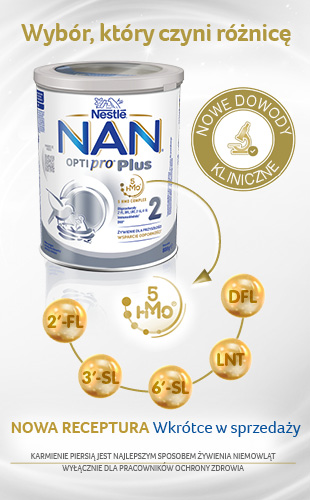Nadczynność tarczycy u dzieci
Słowa kluczowe / Keywords:
Streszczenie:
Nadczynność tarczycy u dzieci występuje z częstością 1 na 100 000 na rok i u 96% pacjentów ma podłoże autoimmunologiczne. Charakteryzuje się
podwyższonymi stężeniami wolnych hormonów tarczycy. Najczęstszą przyczyną jest choroba Gravesa-Basedowa, dla której typowa jest obecność przeciwciał
stymulujących receptor TSH (TRAb). Poza objawami typowymi, u dzieci mogą występować charakterystyczne dla wieku rozwojowego cechy nadczynności
tarczycy, tj. przyspieszenie wieku kostnego, przedwczesne dojrzewanie płciowe, zaburzenia neuropsychiczne, pogorszenie wyników w nauce.
W leczeniu stosuje się tyreostatyki oraz leczenie radykalne – terapię radiojodem lub tyreoidektomię. Trwałe remisje po leczeniu tyreostatykami obserwuje
się u dzieci rzadziej niż u dorosłych, jedynie u ok. 30% pacjentów po średnio 2 latach leczenia. Nadczynność tarczycy u dzieci może wystąpić również
w przebiegu choroby Hashimoto, autonomicznego guzka lub u noworodków matek z wysokim mianem TRAb.
Abstract:
The incidence of hyperthyroidism in children is approximately 1 to 100 000 per year and 96% its cases are due to autoimmunological process.
It is characterized by increased concentration of free thyroid hormone. The most common cause of hyperthyroidism in children is Graves’ disease. It is due
to the effect of TSH receptor stimulating antibodies (TRAb) which stimulate the thyroid to produce excess hormones. Besides typical signs and symptoms,
some characteristic features of hyperthyroidism could be present in paediatric population: advanced bone age, precocious puberty, learning difficulties,
neuropsychiatric disturbances. The antithyroid drugs as the initial treatment are used, however the remission rate in children is significantly lower than
in adults, and reaches about 30% after 2 years of treatment. Additionally, 131I therapy and surgery are considered the optional treatment. Less common
causes of hyperthyroidism in children are Hashimoto thyroiditis, autonomous adenoma or neonatal hyperthyroidism due to maternal TRAb antibodies.


